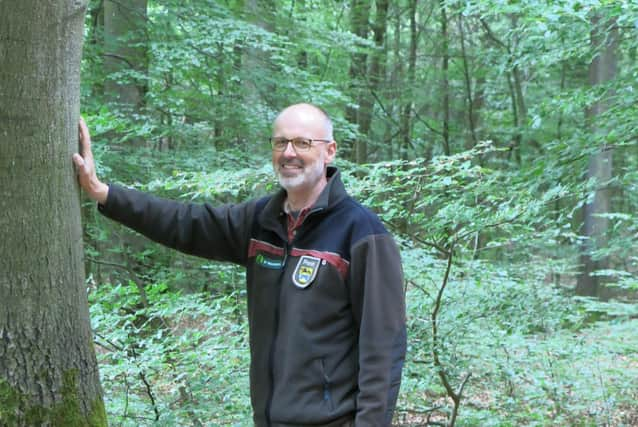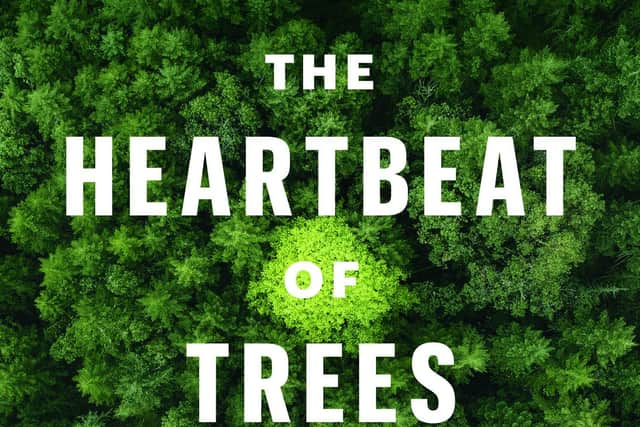Why people can emulate animals and get closer to nature - Peter Wohlleben


We often envy animals for the immediate, clear feedback their senses give them, but how aware are we of our own senses? Sometimes we even seem to relish our role as evolutionary losers.
And so, the bond between people and nature appears to be ruptured beyond repair, and all there is left for us to do is to peer enviously at the amazing abilities animals possess.
Advertisement
Hide AdWe couldn’t be more wrong. We are completely capable of engaging effectively with the world in which we live. It wasn’t so long ago that our ancestors had to fight their way through forests, registering the presence of every possible danger or potential prey quickly enough to act. Dolphins can’t even process blue light, which not only colours the surface of the ocean but also reaches way down into the depths. Our four-legged domestic companions, such as dogs and cats, and wild forest animals, such as deer or wild pigs, do considerably better than dolphins in the colour department.


Seeing forests as green, therefore, is a special skill if you are a mammal. But why, among mammals, have we humans developed this ability? Researchers suspect it has less to do with the colour green and more to do with the colour red. For example, many fruits found among the leaves of trees and bushes are red when ripe. We are not the only ones with our sights set on these. Many birds also have their eyes on them, and birds see red even better than we do. Plants have reacted to the situation: fruit that is eaten by mammals tends to be greenish-red when ripe, whereas fruit favoured by birds is bright red.
It makes sense, then, that we can see red, but why is it that we find green so beautiful? In fact, why do we notice it at all? You might think this is an odd question. We can see green, and so it seems hardly surprising that we notice this colour everywhere in the forest all the time. But that doesn’t necessarily have to be the case.
As a forester, I am, of course, interested in what’s going on with the colour green. When I look out my office window at the clearing around the forest lodge where my wife, Miriam, and I live, I see infinite variations on the colour green. The blue-grey green of the lichens on the old birch tree; the yellowish green of the wintery grasses; the vibrant blue-green of the needles on the branches of the tall Douglas firs; the warm, yellow-grey green film of algae growing on the bark of young beech trees - all of that is green to me. I certainly notice the differences between the various plants and their component parts, and there are descriptive terms in English such as pine green, shamrock green, and sage green, but these combinations are rarely used in everyday speech. Today, we tend to use less precise descriptors, such as light green or dark green.
A strong argument can be made that long ago our ancestors were able to distinguish between many different shades of green and red. If, as I explained earlier, recognising red was important for our survival (because it meant we could find ripe fruit), then the same could be said for all the various gradations in colour from green to yellow.
As fascinating as the subject of colour is, the clarity with which we see things is much more important. And here, both genetics and the nature that surrounds us play a significant role. Sometimes, all we need to do is train our senses a bit to bring them up to speed. Do you dislike the idea of wearing glasses or perhaps just want to stop your eyesight from deteriorating? Then there is something you can do - at least when it comes to near-sightedness. I used to think that the tendency to near-sightedness was hereditary and that at some time in the future everyone on the planet would be wearing glasses. After all, these days almost no one’s life still depends on whether they’ve spotted lions on the horizon in time to run away. In the absence of this kind of danger, it makes sense that the ability to see long distances deteriorates as evolutionary filters eliminate what is no longer necessary. Especially since we can overcome most limitations with appropriate aids.
Advertisement
Hide AdGiven this, are we all going to end up wearing glasses? Absolutely not, because science has recently discovered that near-sightedness is simply a case of our eyes adjusting well to seeing objects up close - think books and computers.
Near-sightedness, therefore, is not an evolutionary adaptation as I feared, but simply our eyes adapting to seeing things up close, as they need to do for reading. Spending time out in nature and looking up or far away, at least when you are young, can improve or even prevent the problem.
Advertisement
Hide AdThere is another, completely different, way you can train your eyes. Maybe you’ve heard that dogs notice wild animals before we do? Contrary to what you might think, this often has nothing to do with scent, because the wind would have to be blowing directly at the dog. Rather, it’s mostly because of movement, which our four-legged companions pick up with their peripheral vision. Our Münsterländer, Maxi, did this amazingly well from the window of a moving car.
Although I didn’t know I was doing it, I’ve also trained myself in this skill over the course of my career. Wild animals are usually well camouflaged. The fur on deer is the same brown as the forest floor for a reason. But if a deer moves, I pick up on that out of the corner of my eye, even if the animal is some distance away. And I’m not alone in this, because, as it turns out, the human eye has an intriguing ability. Our peripheral vision is actually very poor, and the resolution is so low that anything we see at the edge of our field of vision is blurry. And, as Dr Laura Fademrecht and her research team at the Max Planck Institute for Biological Cybernetics in Tübingen, Germany, discovered, we can’t even tell whether what we’re looking at is a circle, a square, or one of the various other objects they used in their experiment. On its own, that discovery would not be particularly amazing were it not for the fact that when it comes to people, our peripheral vision can pick out many more details.
The researchers introduced life-sized stick action figures at the edge of the subjects’ field of vision and had the figures make different movements. They made the figures wave, for example. Participants not only recognised these simplified shapes as people but were also able to judge immediately, based on their movements, whether they were being friendly or aggressive. From an evolutionary point of view, it is a distinct advantage to be able to immediately evaluate the intentions of approaching people. Peripheral vision, therefore, is hugely important to us as we interact with the outside world. You can try out this important skill even if you are in a city -supposedly as far from nature as you can possibly get.
Extract taken from: The Heartbeat of Trees - Embracing Our Ancient Bond with Forests and Nature, by Peter Wohlleben (£19.99, Greystone Books)
Peter Wohlleben will be in conversation with David Knott, curator of The Royal Botantic Gardens Edinburgh chaired by Vicky Allan at an event hosted by Portobello Books on Thursday 10 June at 7pm https://theportobellobookshop.com/event/the-heartbeat-of-trees/
Comments
Want to join the conversation? Please or to comment on this article.